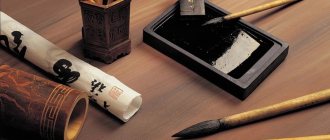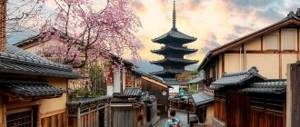Sake is a unique drink with more than 2000 years of history. It is made in Japan from rice, but is neither rice wine nor vodka. It does not belong to the first one, since it is made from grain, not grapes, and it is not considered vodka, because it is a product of natural fermentation, and not distillation. Sake can range from 14-20% ABV depending on the style, but is still close to wine. And it also has many varieties: depending on the raw materials, aging, filtration and alcohol content. We'll figure out how to drink sake correctly, what the temperature of the alcoholic drink should be when served, how many degrees there are in sake and the nuances of producing one of the symbols of Japanese culture.
History of rice wine
The national name for sake is “nihonshu”: from the words “nihon” - Japan and “shu” - an alcoholic drink. The official, legally established name is “seishu”.
The history of the drink goes back 2000 years. Initially it was made in temples and at the imperial court, and later in small village communities. In the Middle Ages, the modern composition of sake became traditional, large production centers appeared, and the drink itself became widespread. But its taste was not as subtle as it is today.
Nihonshu is produced in 47 prefectures within the country, as well as abroad: China, the USA and some other countries. But in our homeland, the art of sake production is passed down in every family from father to son, sometimes for 20 generations!
How did sake come about?
0
Who first thought of going to such lengths to get a drink with a strength of only 15 degrees, history is silent. It is known that sake has been produced since ancient times, and its predecessor was a drink made using “kuchikamizake”. This unpronounceable word, which has no analogues in other languages, refers to chewing rice with the addition of saliva. The ancestors of the samurai spat the unappetizing and completely unsanitary substance into special containers, where the resulting liquid fermented and gained strength. To prevent the production of alcohol from looking completely disgusting, beautiful virgins were trusted to chew rice. Some of the alcohol was left for intended use, and some was dedicated to spirits and wasted in vain, poured onto the altars of temples and simply splashed onto the ground, to gain the favor of the fertility gods.
Secret weapon
The next stage of production involves spraying the koji. And this is the third important component, without which modern sake is simply unthinkable! Until the 15th and 16th centuries, rice was simply chewed in the mouth and spat into special containers for fermentation.
Rice not only has a grain containing the starch necessary for fermentation, but also an outer shell of proteins, fats and other elements. This composition may negatively affect the taste of the drink. And to solve this problem, rice is polished. But starch itself can be an obstacle. It is a very complex compound based on glucose, which the yeast must convert into alcohol (sugar into alcohol). And they cannot absorb the starch entirely. It must first be broken down, and therefore an enzyme based on the kojikin fungus (aspergillus oryzae) - koji - comes to the rescue.
Bacteria, yeast and Japanese punctuality
0
Japan is a very original country, so alcohol is prepared there in an unusual way. Sake can only be obtained from a special variety of rice with large grains and a high starch content. Before starting the sacrament of cooking, the rice is carefully polished to rid its shell of substances that can leave an aftertaste. Rice for sake is not cheap. During the grinding operation, the grade of the product is determined - the more carefully the grains are processed, the higher the quality of the alcoholic drink. After preparation, the rice is washed, filled with water and left soaked for a certain time. After a while, the rice is transferred to another container and steamed - this opens its pores, which is very important. Microorganisms are then used - the Japanese use koji fungus to prepare the raw material. The culture is placed in containers with rice, placed in rooms with high humidity and temperature. The process takes 48 hours, after which they begin to prepare the wort. Rice with overgrown koji is placed in vats, filled with water and kobo yeast is added. The mixture ferments for at least two weeks, and then more steamed rice and koji are added to the vats. Mold turns starch into sugar, and yeast turns sugar into alcohol. Another three weeks pass in this way and a different type of wort is obtained, which is called moromi. The finished alcoholic drink is squeezed out of it, which is then filtered and pasteurized.
0
It should be added that filtration is a mandatory step, since sake with sediment is considered substandard and no Japanese will drink it. Pasteurization is also important - it helps to interrupt processes involving microorganisms that can spoil the drink during storage in the shortest possible time. We described the technology concisely and primitively, but in fact this is a very responsible work in which all actions are scheduled almost minute by minute. Deviation from the canons immediately affects the taste, color or strength of the product and transfers it to the status of marriage.
Historical reference
The exact origin of shochu has not been established. Perhaps the base for it was the eastern arrack, a distillate from a variety of fruits. Be that as it may, shochu appeared in Japan at least around the middle of the 16th century, and possibly earlier. Missionary Francis Xavier wrote in 1549: “The Japanese drink rice arrack <...> however, I have not seen any drunk people here. As soon as a Japanese feels intoxicated, he immediately lies down and falls asleep.” The first written mention of shochu itself dates back to 1559. Two carpenters who were building a wooden temple carved an inscription on the roof: “The senior priest is so stingy that he never even poured us shochu. What a misfortune!”
From the mid-16th century to the end of the Edo period (1868), Japanese grain moonshine was made using a single distillation method. During the Meiji period (1868-1912), multiple distillation emerged and took hold.
The Japanese word "shochu" is a modification of the Chinese word 燒酒, which roughly translates to "burnt liquid" or "fire water".
In the early 2000s, a real boom in shochu began, especially among young people and women. For the first time in history, the consumption of this drink has surpassed that of sake. The reason for this is recent medical research that has proven the health benefits of cereal distillate: in particular, it reduces the risk of thrombosis, diabetes, and heart attack. Shigechiyo Izumi, who lived to be 105 years old (according to some sources - up to 120), claimed that he drinks shochu every day and owes his longevity to it.
On the island of Kyushu, the birthplace of the drink, the term “sake” refers to shochu. Here it is diluted with hot water.
Alcohol rules
- At the end of any toast (or instead of it), the word “kanpai” is said - this means that you will have to drink to the bottom.
- It is not customary to pour yourself a drink.
- Be sure to order appetizers. Edamame (枝豆 / green soybeans) is, of course, a classic. Also try Yakitori (焼き鳥/grilled chicken) and cold tofu.
- Many people, after the first two drinks or at the end of the party, order ramen (such noodles). This is part of Japanese culture - we advise you to join. And the gawking will not be so strong with sake.
- Do not allow empty bottles and glasses on the table.
- If someone fills your glass, then take it (the glass) with both hands - this is a polite gesture.
The tangled history of the drink
I’ll start my story about sake from modern times. My acquaintance with the Japanese national alcohol began with an unpleasant discovery: in Japan there is a national Sake Day! And we don’t have a day of vodka - the national Russian drink!!! It's a shame! Here, my favorite female person told me on my arm that every day we have Vodka Day. Well, then, especially - where is the holiday?
In general, this professional holiday of Japanese winemakers, or rather sakemakers, is celebrated on October 1, but everyone goes around drunk. Officially, this day was included in the holiday calendar in 1978, and now many companies give their employees a day off, since drunkenness at work does not lead to good things.
The history of this drink goes back more than 2 thousand years. I won’t bore you with the strange names of emperors and dynasties that drank sake, but rather I’ll tell you a beautiful legend. A Japanese crane flew over Japan, carrying a grain of rice stolen from the peasants to its children.
Then the stupid crow croaked, the crane got scared and dropped the grain. And it, as if on purpose, landed straight into the stem of the cut reed. The upset crane flew off to look for another grain, and the grain of rice dangled in the sweet molasses and fermented.
And it turned out something intoxicating. A traveler walked by, smelled the aroma, tasted the drink and... he felt good. He realized what was happening, threw rice into the reeds, and when the process was completed, this man went straight to the emperor, who was suffering from idleness and idleness.
The emperor tasted the intoxicating drink, bought the recipe from the walker, and learned all the details. Then he cut off the fool’s head, took the money back, and began making sake only for the palace. But the crane was respected - many sake labels feature this bird.
How to drink, what to snack on and what to say
- Sake should be drunk from special ceramic choko cups (o-teko, guinomi, sakazuki), in small sips with breaks. The process can be stretched out for hours, interspersed with leisurely conversation. It is not customary to leave an unfinished drink - this is a very bad omen. Cheap varieties of the drink are heated (this way you don’t notice a slight moldy smell), while expensive brands, on the contrary, are cooled to a temperature of 5 degrees – this way the taste and aroma are better revealed. Although, in the winter cold, expensive sake is also heated - for “warming”, so to speak. By the way, export bottles indicate the temperature to which one or another variety should be heated. Range from 30 to 55 degrees. There are special tokkuri jugs for this purpose.
- The snack, of course, is not lard or pickled cucumber, but sushi, sushi, sushi (mini sandwiches), rolls and dried squid.
- Toast also exists in Japan. Instead of our “come on!” they say "kampai" there. Clinking glasses is not accepted.
And finally. As it turns out, people drink less sake in Japan than in the US and Europe. The Japanese, in general, are a light-drinking nation. For them, “getting drunk like a pig” means drinking more than 3 cups of choco with sake in the evening.
It’s somehow not interesting even to travel to this Japan. And their geishas are somehow unreal, as if they were plastic. And our vodka is strong and delicious! And the women are so beautiful, warm, lively. It’s so good that I was born in Russia!
On this joyful note I say goodbye. Don’t go missing if you want to learn a lot more interesting things about the alcoholic traditions of the world. And about our good moonshine.
A legend is a legend, but the following facts have been preserved in history:
- Until the 7th century AD The people practiced the following recipe: people chewed rice, then spat it into a large wooden vat, where this porridge fermented. Then on holidays this thick mash was eaten with chopsticks. This not very appetizing, to me, low-alcohol dish was called “kuchikami no sake” (kuchi - mouth, kami - chew).
- Since the 8th century, chewing has been replaced by adding koji molds to water-rice porridge. Since the 10th century, the drink began to be distilled and filtered. But only for the imperial palace and offerings to the gods.
- In the 17th century, people who also wanted to drink and suffer from alcoholism rebelled. Then they started making sake for sale.
This is where the story ends. Today, the production of this drink is based on a high-tech basis, sake is the Japanese national pride, like Fuji, and the country has a whole cult ceremony on how to drink it.
Attitudes towards alcohol in Japan
The culture of drinking alcoholic beverages has evolved over centuries. Even in ancient times, Buddhist monks brewed sake, and Chinese envoys wrote about them as people who “drink a lot.” Drinking has become a real problem in Japan today. Employees who come to work for a company often experience pressure from their superiors if they refuse to share a glass of strong drink with them. Because of this, newcomers sometimes have difficulty moving up the career ladder.
In 2021, a WHO report was released. According to him, Japan ranks 119th out of 189 countries for alcohol consumption. On the other hand, WHO takes only 10 g per unit of alcohol. In Japan, this figure is 20 g. Buying a bottle of strong drink here is much easier than chewing gum. Booze is sold everywhere, and the law does not prohibit drinking in public places, in parks, on beaches, or in transport.
Types of shochu
Multiple distillation (Class A). An alcoholic beverage that has been distilled more than once, diluted with water to an alcohol content of 36% or less, and meets the following requirements:
- unsprouted grains were used for production (the drink should not be malt);
- non-charcoal filters were used for filtration;
- if sugar was the base ingredient, the finished distillate must have a strength of at least 95%;
- the drink is not fortified with additional alcohols not included in the list of permitted ingredients.
This shochu is often called kōrui shōchū (korui), it is made from potatoes (regular and sweet), and corn. Large productions “specialize” in this type; korui shochu is sold in all stores and is very popular.
Single distillation (Class B). An alcoholic drink based on grain, potatoes and sugar, subjected to a single distillation, with a strength of no more than 45%. Sometimes the name otsurui shōchū (otsurui) is found. It is distinguished by a pronounced taste of the base ingredient, mainly produced in small and medium-sized distilleries.
Korui shochu – distilled several times, maximum strength – 36%. Otsurui shochu is distilled only once and diluted to 45%
Shochu is also distinguished by its aging period (aging occurs in stainless steel vats, clay vessels or oak barrels):
- 1-3 months;
- 3-6 months;
- 6 months – 3 years;
- more than 3 years.
The longer the aging, the softer the taste and the less “fusel” notes in the drink.
Drinking rituals
Drinking alcoholic beverages in the land of the rising sun is a whole ritual. It starts with a lot of beer or sake. The youngest of those present (by age or rank) must fill the glass of the elder, after which they must change roles. As a rule, partygoers do not fill their own glass. There will always be someone who will happily give you more.
At the beginning of the evening, it is necessary to make a welcoming speech, sum up the results of some business (if this is an informal meeting with colleagues), note and praise those who distinguished themselves. After the toast, guests proceed directly to eating and drinking alcohol. Before you take a sip, you need to loudly shout “Kanpai!” This word can be translated as “drink up,” and is a reference to the tradition of drinking sake in one gulp. Now it is practically not observed.
Quick and severe intoxication is the norm for the Japanese. Anything said or done in a deranged state is not taken seriously. Stupid jokes and thoughtless words fly past the ears and are never remembered. Despite all this, the Japanese never force a person to drink if he does not want to. Anyone can drink non-alcoholic drinks.
The end of an entertainment event is indicated by tejime: when those present at the party begin to clap their hands rhythmically. After the main part is completed, it is time for “nijikai”. It is not necessary to visit it, and only the small, most persistent groups move to other bars, where the real fun begins.








